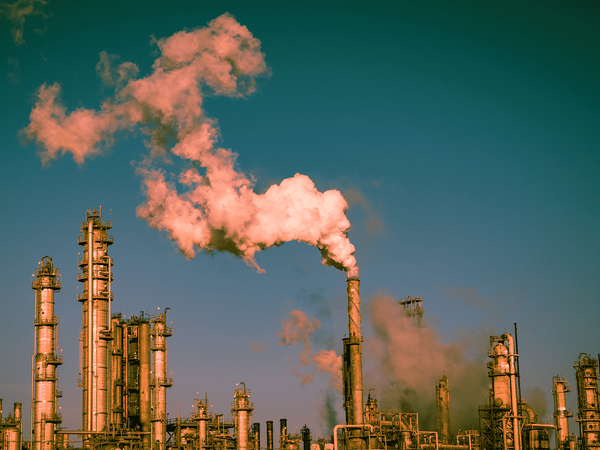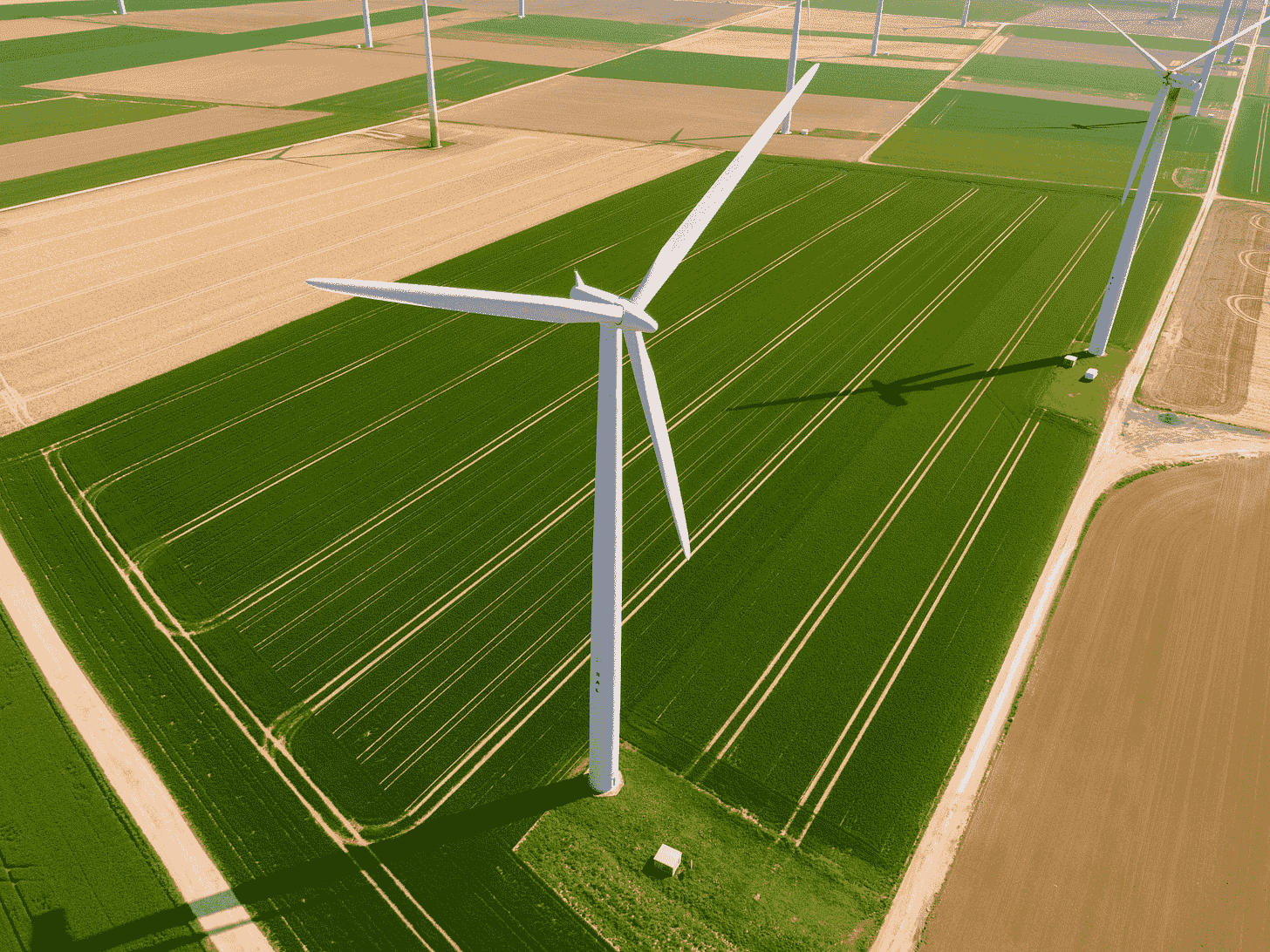Is natural gas renewable or non-renewable?
As we search for cleaner energy sources, natural gas has emerged as an alternative solution to fossil fuels. It is believed to produce about 50-60% less CO2 than coal.

Natural gas comes from organic matter, such as animals, plants, and microorganisms that died millions of years ago. When this matter, which is gradually buried under pressure and heat over time, is put in an anaerobic environment, it breaks down and eventually forms a gas called natural gas.
Once extracted from underground reservoirs, natural gas is most commonly used for heating and electricity. It is a major source of electric energy globally— about 39.8%(Figure 1). This makes it one of the largest energy sources for powering our homes and businesses. However, its advantage of being accessible comes with the drawback of its impact on the environment.
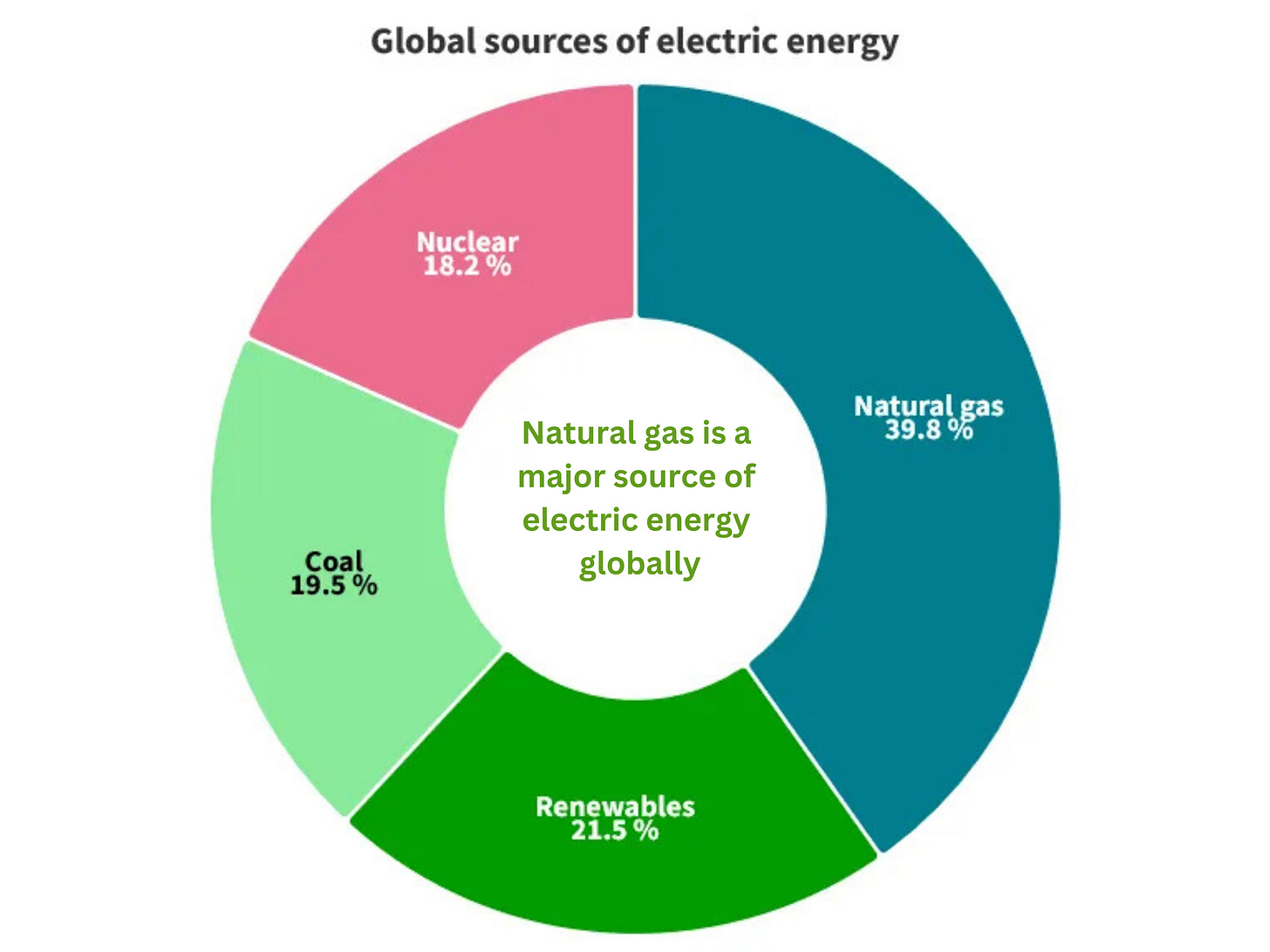
How harmful is natural gas to the environment?
While natural gas is one of the cheapest energy sources, it isn't good for the environment. Figure 2 shows the carbon emissions of various fuels. Natural gas is the cleanest form of non-renewable energy.
Apart from the fact that natural gas belongs to the fossil fuel family, its impact is also more complex and environmentally damaging than that of renewables.
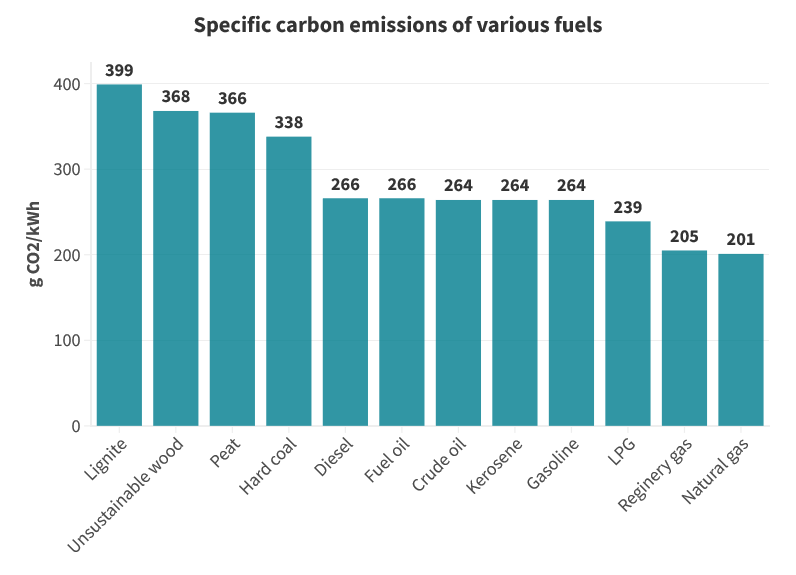
The presence of methane in natural gas is the biggest concern, although it also contains other hydrocarbons such as nitrogen, CO₂, ethane, propane, and butane. During extraction and transportation through pipelines, methane leakage can occur. The production process can also generate contaminated wastewater that must be properly disposed of to prevent groundwater and land pollution in surrounding areas. Once contaminated, this water becomes hazardous to humans and wildlife due to its toxicity.
Natural gas production and transportation require extensive pipeline networks, which cause ongoing land disruption during their construction. This includes land excavation, the destruction of trees and plant life, and the displacement of communities living in and around the affected areas.
The end-of-life stage of natural gas is also a concern. When transporting and selling natural gas is not economically viable, many oil companies burn it, releasing greenhouse gases and other toxic pollutants into the air.
Challenges of natural gas
Methane is one of the biggest challenges. It makes about 70% of raw natural gas in the ground and over 95% of the processed gas we burn for energy. When burned, it turns into CO₂. However, even before that, it can leak into the atmosphere from various parts of the gas infrastructure, such as valves and pipes.
The Environmental Protection Agency (EPA) estimates that about 6.5 million metric tons of methane leak from the oil and gas supply chain each year, which is approximately 1% of total natural gas production. At this rate, methane leaks account for around 10% of natural gas’s contribution to climate change, while CO₂ emissions make up the remaining 90%.
To make matters worse, even if we knew exactly how much methane was leaking from our natural gas system, experts still struggle to estimate its precise impact on warming. Methane has a much shorter lifespan than CO₂ but traps significantly more heat while it remains in the atmosphere. According to the EPA, methane is about 28 times more potent as a warming gas than CO₂.
However, top producing companies and countries seem to ignore this problem. The U.S. is the world's top natural gas-producing country in 2023 (Figure 3). Over the last 15 years, the country has experienced a dramatic rise in the production and use of natural gas. Only in 2023, the gas accounted for about 43% of the country’s electricity generation.
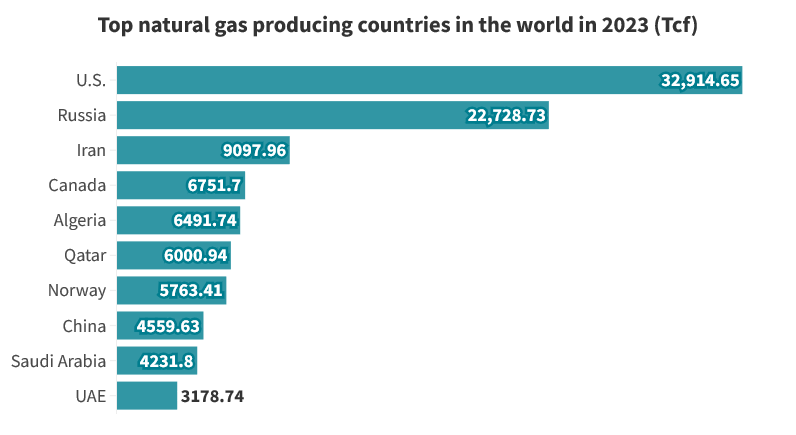
Is natural gas renewable or non-renewable?
For an energy source to be considered renewable, it must be naturally replenished. For example, renewable energy comes from wind, sunlight, and water. These sources occur naturally, are available in relatively unlimited amounts, and can be used repeatedly.
Natural gas, on the other hand, is not unlimited. Like coal and oil, it comes from a finite source that cannot be replenished over time and is thus classified as a non-renewable resource.
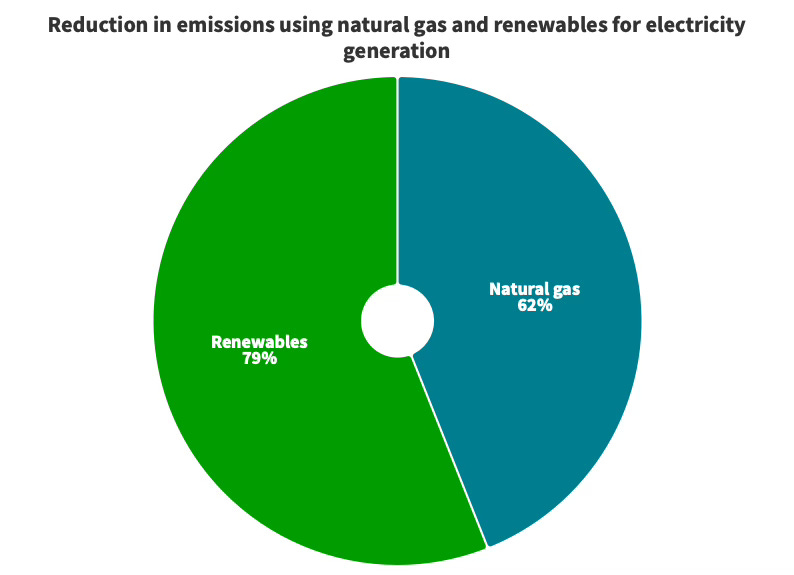
Compared to coal and oil, natural gas is cleaner. Switching from coal to natural gas or renewables has often been credited with a significant drop in CO₂ emissions (Figure 4). For example, by using natural gas, we can already reduce about 62% of emissions compared to the same amount of fossil fuels.
Because natural gas produces fewer air pollutants and less CO₂ when burned, it is used more in electricity generation and fueling vehicles. Additionally, it is relatively cheap and creates millions of jobs.
However, it is still a greenhouse gas. The U.S. Energy Information Administration estimates that we have enough natural gas remaining to last around 86 years. This means that, while renewable technologies advance, natural gas could serve as a good temporary alternative.
